France
46.2276° N, 2.2137° E
France
46.2276° N, 2.2137° E
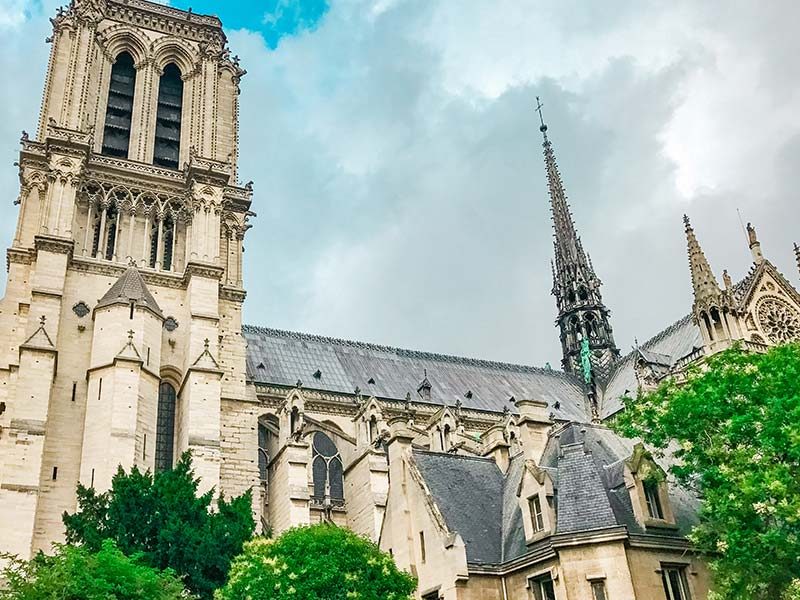
Cathédrale Notre-Dame de Paris
48.8530° N, 2.3499° E
Notre-Dame de Paris meaning “Our Lady of Paris“, referred to simply as Notre-Dame, is a medieval Catholic cathedral on the Île de la Cité in the 4th arrondissement of Paris. The cathedral was consecrated to the Virgin Mary and considered to be one of the finest examples of French Gothic architecture. Its pioneering use of the rib vault and flying buttress, its enormous and colourful rose windows, as well as the naturalism and abundance of its sculptural decoration set it apart from the earlier Romanesque style. Major components that make Notre Dame stand out include one of the world’s largest organs and its immense church bells.
Sacré-Cœur Basilica Paris France
48°53'11.7"N 2°20'35.2"E
The Sacré-Coeur, consecrated in 1919, is one of the most iconic monuments in Paris. At the top of the Butte Montmarte, it has one of the most beautiful panoramic views of the capital, from 130 metres above ground. In a Roman-Byzantine style, the Sacré Coeur is recognizable by its white colour. Inside the building, the ceiling is decorated with the largest mosaic in France measuring about 480 m². The crypt is also worth a visit. And to go even higher up, visitors can access the dome where the 360° view of Paris is magnificent. A short walk from the Sacré Coeur is the Place du Tertre, the district of Abbesses with its steep, winding roads, and at the bottom of the hill, the famous Moulin Rouge cabaret.
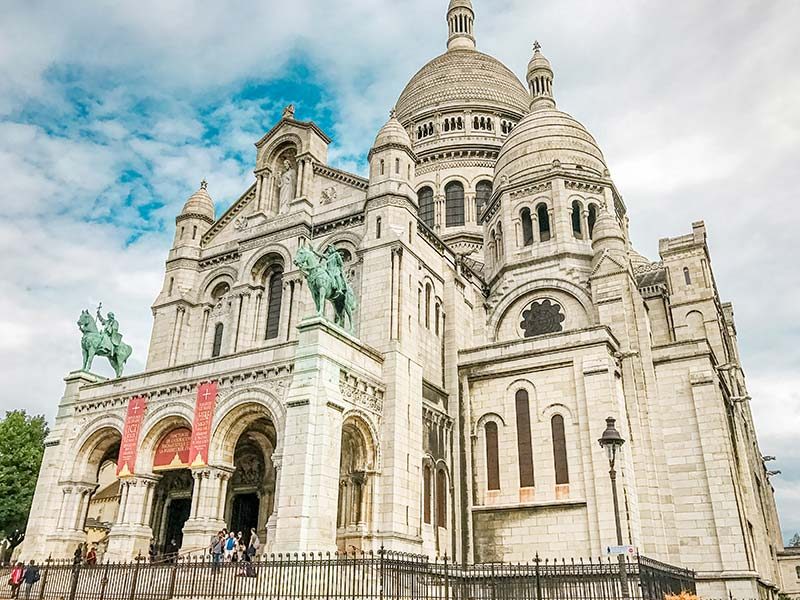
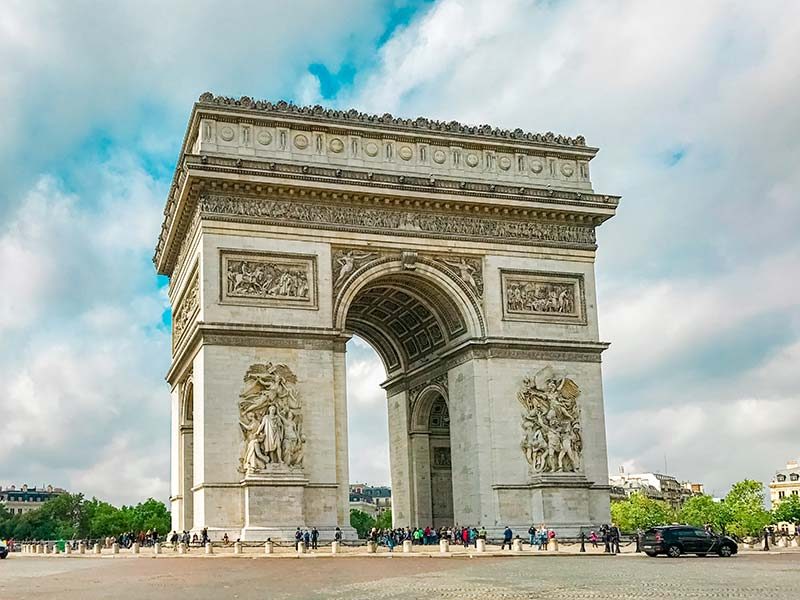
Arc de Triomphe Paris France
48°52'26.1"N 2°17'41.9"E
Standing at the western end of the Champs-Élysées, the Arc de Triomphe is the largest triumphal arch in the world, twice the size of the Arch of Constantine in Rome on which it’s modeled. Commissioned by Napoleon I and designed by Jean-François-Thérèse Chalgrin, the monument forms part of Paris’ Axe historique, which extends from the courtyard of the Louvre to the Grande Arche at La Défense.
Cathédrale Notre-Dame de Paris
48°51'09.6"N 2°21'03.8"E
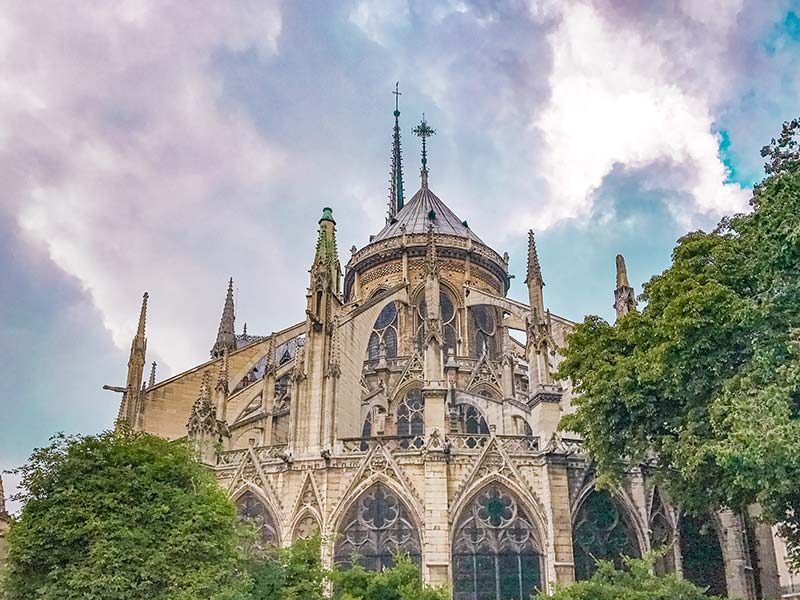
Paris
Paris, France’s capital, is a major European city and a global center for art, fashion, gastronomy and culture. Its 19th-century cityscape is crisscrossed by wide boulevards and the River Seine. Beyond such landmarks as the Eiffel Tower and the 12th-century, Gothic Notre-Dame cathedral, the city is known for its cafe culture and designer boutiques along the Rue du Faubourg Saint-Honoré.

Maison Internationale
48°49'12.1"N 2°20'18.5"E
Cité internationale universitaire de Paris is a private park and foundation located in Paris, France. Since 1925, it has provided general and public services, including the maintenance of several dozen residences housing around 6,000 students and visiting academics in the Île-de-France region. It has been officially recognized as a foundation of public interest since then. The Cité Internationale Universitaire de Paris promotes, in a spirit of tolerance, exchanges between students from around the world
Hôtel de Ville
48°51'24.2"N 2°21'05.2"E
The Hôtel de Ville City Hall in Paris, France, is the building housing the city’s local administration, standing on the place de l’Hôtel-de-Ville in the 4th arrondissement. The south wing was originally constructed by François I beginning in 1535 until 1551. The north wing was built by Henry IV and Louis XIII between 1605 and 1628. It was burned by the Paris Commune, along with all the city archives that it contained, during the Commune’s final days in May 1871. The outside was rebuilt following the original design, but larger, between 1874 and 1882, while the inside was considerably modified. It has been the headquarters of the municipality of Paris since 1357. It serves multiple functions, housing the local administration, the Mayor of Paris (since 1977), and also serves as a venue for large receptions.

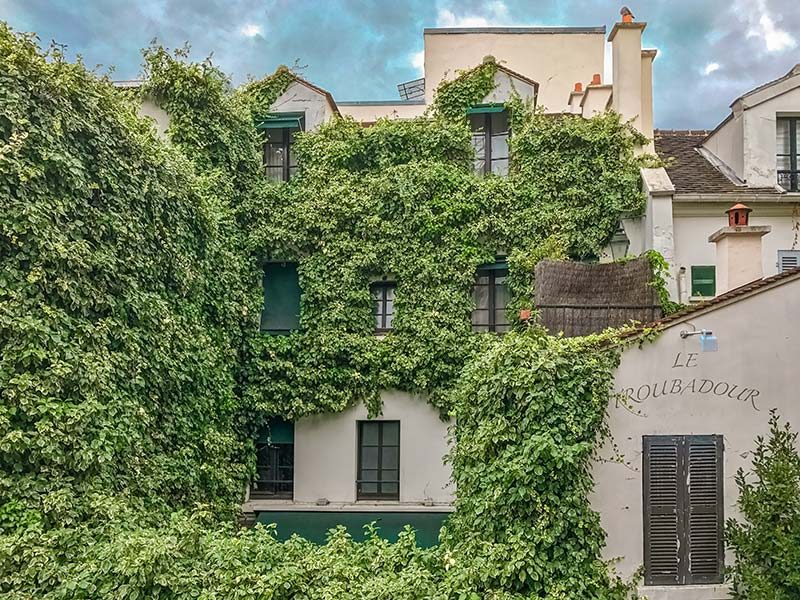
Quaint French Alley
48°52'26.1"N 2°17'41.9"E
Fontainebleau Île-de-France
48°23'56.5"N 2°42'10.6"E
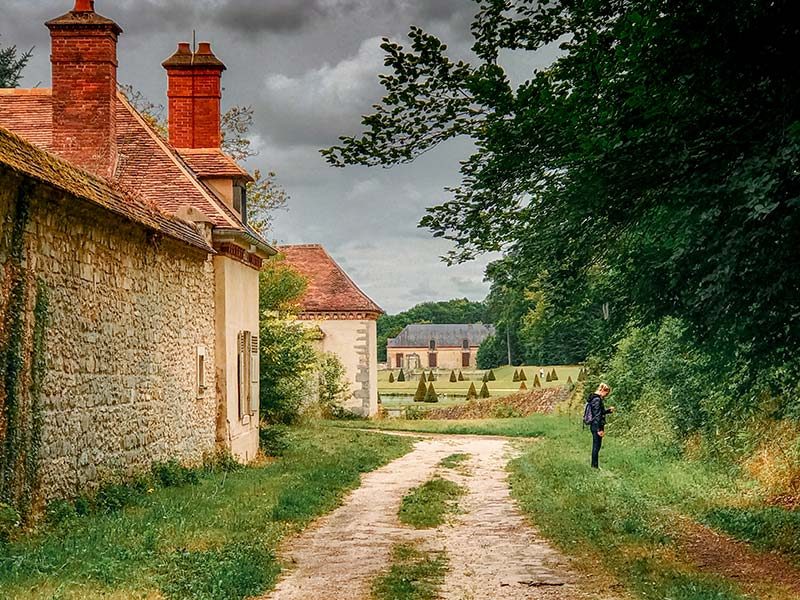
Paris Cont..
Paris, France, is an unusually coherent architectural creature. Paris’ modern buildings have developed gradually out of earlier styles; palaces and mansions have survived by transforming into apartments and shops, and most streets harbor a range of buildings from various centuries. Our Paris guide traces a millennium of building in Paris, and what’s amazing is that so much remains visible and integrally important to the way that Paris works, from the earliest Medieval period through the most contemporary constructions.
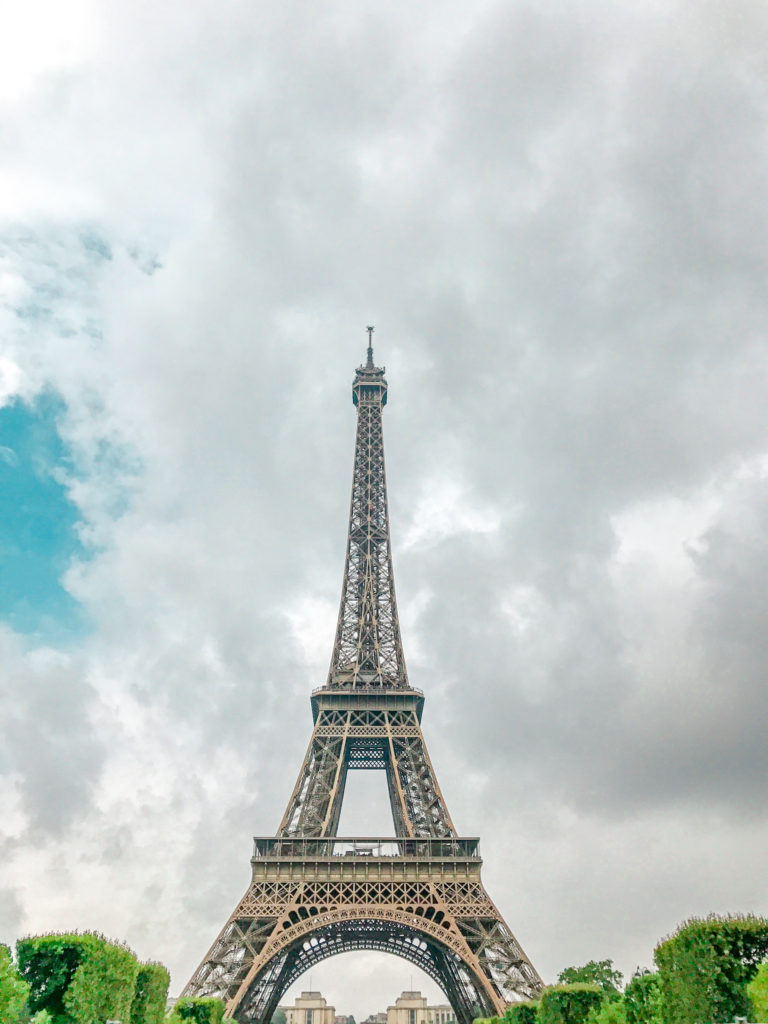
Must See Sightings
Arc de Triomphe
The Arc de Triomphe de l’Étoile is one of the most famous monuments in Paris, France fin out why.
Sacré-Cœur Basilica
One of the most iconic monuments of Paris, the Basilica of Sacré-Cœur sits at the top of Montmartre. Perched high, and visible from much of the city.
Disney Land Paris
Find your happy ever after with a magical trip to Disneyland Paris!
Fontainebleau
Fontainebleau is renowned for the large and scenic forest of Fontainebleau, a favourite weekend get away for Parisians.
Notre-Dame
The Cathedral of Notre-Dame de Paris, a masterpiece of Gothic architecture, is the most visited monument in France.
Louvre
The Louvre Museum is the world’s largest art museum and a historic monument in Paris, France.
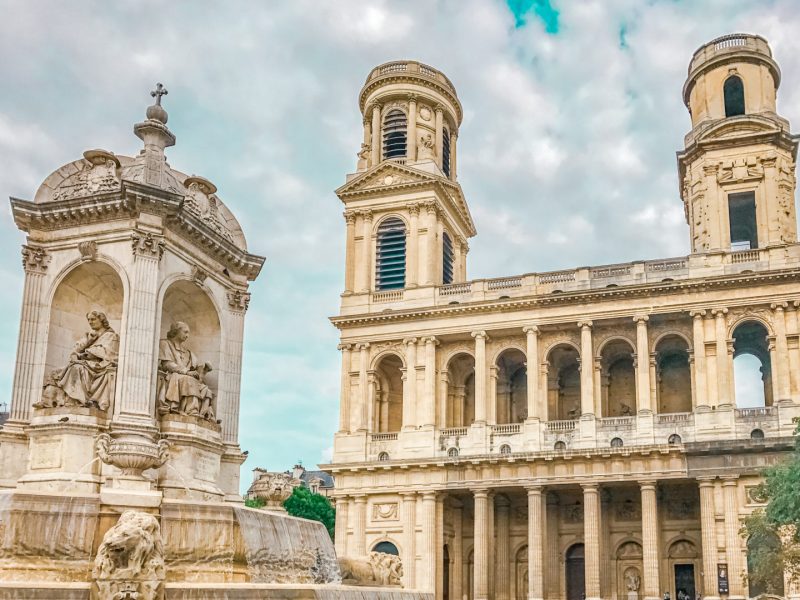
Église Saint-Sulpice
48°51'02.9"N 2°19'59.0"E
The Church of Saint-Sulpice is a Roman Catholic church in Paris, France, on the east side of Place Saint-Sulpice, in the Latin Quarter of the 6th arrondissement. It is only slightly smaller than Notre-Dame and thus the second largest church in the city. It is dedicated to Sulpitius the Pious. Construction of the present building, the second church on the site, began in 1646. During the 18th century, an elaborate gnomon, the Gnomon of Saint-Sulpice, was constructed in the church.
Avenue Bosquet Paris, Île-de-France
48°51'17.0"N 2°18'19.9"E
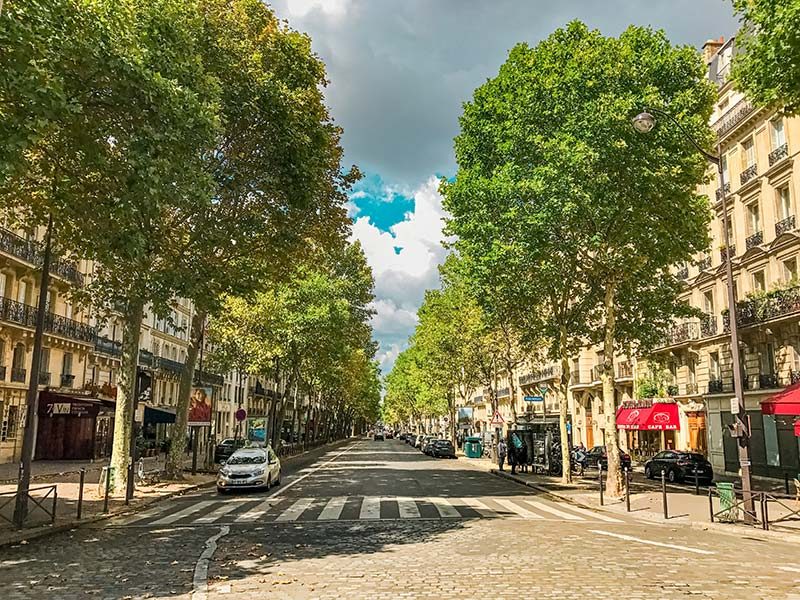

Chateau d'eau Montmartre
48°53'15.2"N 2°20'30.8"E
Built in 1835, Montmartre’s Water Tower used to supply the former village, penalized by its relief and altitude, with water. The fountain, nested in the small garden, is Jean Baptiste Clément’s artwork.
Grand Palais
48°51'57.9"N 2°18'51.6"E
Located in the heart of Paris on the Avenue des Champs-Élysées, the Grand Palais is the iconic monument of the Rmn-GP. Built for the Universal Exhibition in 1900 and dedicated “by the French Republic to the glory of French art”, it was designated as a historic monument in 2000 by the French Ministry of Culture.

Disneyland Paris
Disneyland Paris, formerly Euro Disney Resort, is an entertainment resort in Chessy, France, a new town located 32 km (20 mi) east of the centre of Paris. It encompasses two theme parks, many resort hotels, Disney Nature Resorts, a shopping, dining, and entertainment complex, and a golf course, in addition to several additional recreational and entertainment venues. Disneyland Park is the original theme park of the complex, opening with the resort on 12 April 1992. A second theme park, Walt Disney Studios Park, opened in 2002, 10 years after the original park. Disneyland Paris celebrated its 25th anniversary in 2017. Within 25 years of opening, 320 million people visited Disneyland Paris, making it the most visited theme park in Europe.[1] The Parisian resort is the second Disney park to open outside the United States following the opening of the Tokyo Disney Resort in 1983 and is the largest Disney resort to open outside of the United States. Disneyland Paris is also the only Disney resort outside of the United States to be completely owned by The Walt Disney Company.
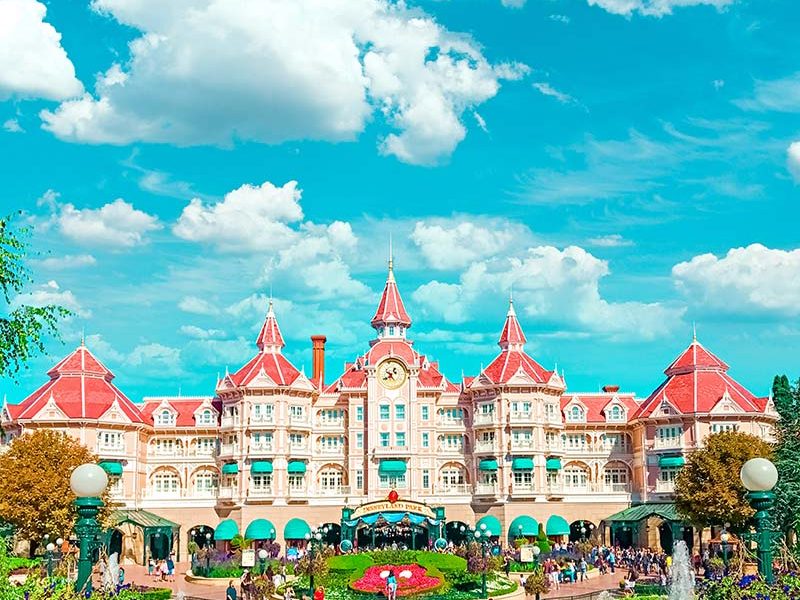
The Disneyland Paris Hotel
48°52'10.5"N 2°46'50.4"E
The Disneyland Paris Hotel is a hotel at Disneyland Paris. Located between Main Street, U.S.A. and Fantasia Gardens, the hotel is situated above the entrance turnstiles and ticket booths for Disneyland Park. The architecture of the hotel references Victorian American hotels, such as the Hotel del Coronado.
Big Thunder Mountain
48°52'13.1"N 2°46'30.6"E
At Disneyland Paris, Big Thunder Mountain sits on an island in the middle of the Rivers of the Far West, where Tom Sawyer’s Island would normally sit. Unlike all of the other versions of the ride, this version has an elaborate backstory concerning the town of Thunder Mesa, founded by Henry Ravenswood to support the mining in the mountain. This backstory influences not just Big Thunder Mountain but also Frontierland’s other major attraction, Phantom Manor, Disneyland Paris’s equivalent of the Haunted Mansion.
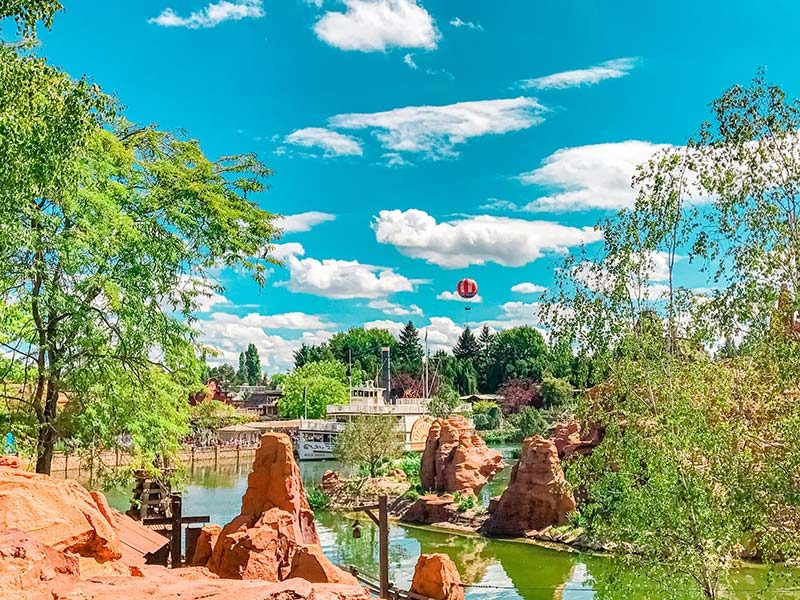
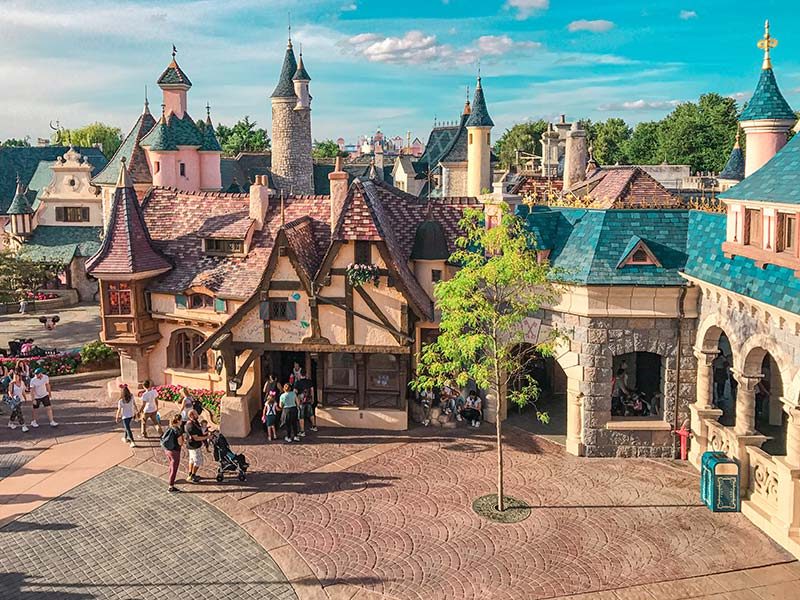
Fantasy Land
48°52'24.0"N 2°46'33.7"E
The fourth Fantasyland to open was in France at the Euro Disneyland theme park (now called Disneyland Park). Themed around a fairy tale village, this specifically notes the European origins of many of the classic Disney films’ source material.
A unique attraction for the park was ‘Les Pirouettes du Vieux Moulin’–a ferris wheel based on the Silly Symphony short The Old Mill. The concept was originally projected for Disneyland in 1954, but was discarded, only to be reconsidered and built at the Paris park more than 35 years later. That ride is now retired, but it’s still standing.
Le Château de la Belle au Bois Dormant
48°52'20.6"N 2°46'37.3"E
Le Château de la Belle au Bois Dormant (French for “The Castle of the Beauty in the Sleeping Wood”, but known in English as Sleeping Beauty Castle) is the fairy tale castle at the centre of Disneyland Park and a continuation of Sleeping Beauty Castle first seen at Disneyland in California.
The Castle is home to a dragon, which, at 27 meters (89 ft) from head to tail, was the largest Animatronic figure yet built when the park opened in April 1992. The walkthrough attraction consists of a dimly lit cavern with the large dragon sleeping silently.






